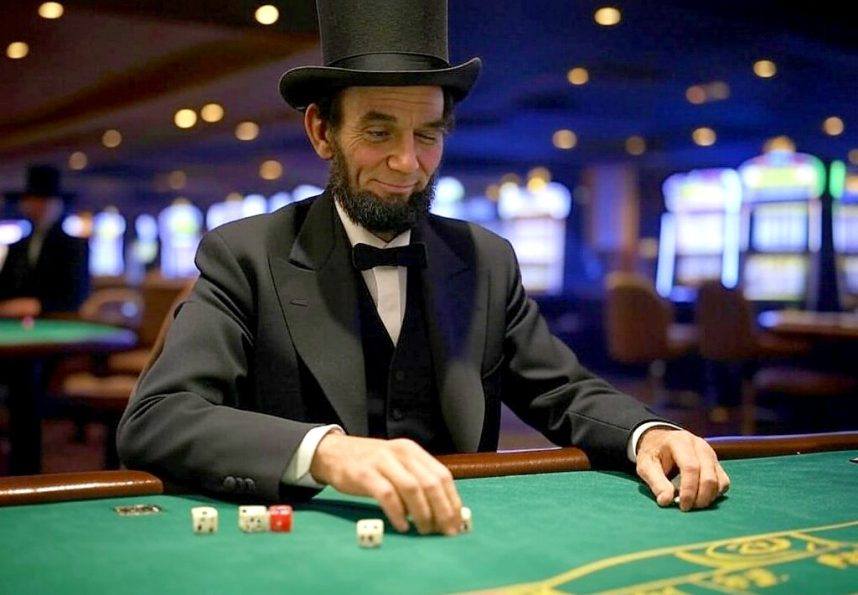Published on: December 23, 2024, 07:49h.
Last updated on: December 21, 2024, 09:52h.
The 1859 discovery of silver and gold in the territory of Nevada spurred its admission as a US state, so the riches could finance Union forces during the Civil War. Local schoolteachers have taught this for more than 60 years. Many still do, but it’s baloney.

Unfortunately, Nevada Day, October 25th, already passed. That’s when residents of the 36th state commemorate the people responsible for its admission to the United States. But we think it’s never too late to debunk what preeminent Nevada historian Guy Rocha once labeled “our state’s No. 1 legend.”
“It’s a wonderful tale,” he told the Reno Gazette-Journal in 2013, “but nothing could be farther from the truth.”
Truth Under-Mined

Nevada’s creation as a territory, on March 2, 1861, was indeed prompted by a desire for its mineral riches to benefit the Union and not the Confederacy.
The federal government bought much of the territory’s silver and gold bullion to support its currency and mint coins, and the new taxes it collected from Nevada went to the Union cause.
However, by the time Nevada became a state three years later, the Civil War was all but over. After decisive victories won by the Union at Gettysburg and Vicksburg, the South was in shambles.
Supporting the myth, in the minds of many, is Nevada’s motto, “Battle Born.” It implies the state was created in the midst of the Civil War, possibly to influence its outcome.
Except that “Battle Born” isn’t even the state’s motto. (Wait, we’ll get to that myth shortly.)
A 1962 episode of the TV show “Bonanza” further clouded the truth by introducing an historical inaccuracy that many Baby Boomers still think really happened.
In “The War Comes to Washoe,” writers Alvin Sapinsley, Fred Hamilton, and David Dortort depicted the state’s second constitutional convention, showing delegates debating whether Nevada should leave the Union and join the Confederacy.

That convention happened, on July 4, 1864, in Carson City, but the debate was over whether Nevada should remain a territory or become a state.
State of Denial
The real reason Nevada became the 36th state is because President Abraham Lincoln sought reelection, but faced a probable three-way race against Democrat George B. McClellan and Republican John C. Fremont.
Lincoln, a Republican who ran for this election only on the National Union Party ticket — a coalition of Republicans and War Democrats — desperately needed new states that would support his candidacy.
Once a grateful Nevada became a state, he knew, it would get to choose three electors, the minimum per state.
On Oct. 31, 1864, just eight days before the presidential election, Lincoln’s supporters in Congress voted to admit Nevada.
Fremont, the namesake of Las Vegas’ Fremont Street, had dropped out of the race a month earlier, so Lincoln handily won the election — 212 electoral votes to McClellan’s 21 — without even needing Nevada, which he won anyway by a margin of 19.68%. (Incidentally, one of Nevada’s electors, Addison Peck, got snowbound without any law in place to replace him. So the 1864 presidential election was one of only three in which only two electoral votes were cast by a state or district.)
Lincoln was also pushing hard for the adoption of the 13th Amendment, which is a secondary reason he wanted Nevada admitted. As depicted (accurately) in Steven Spielberg’s 2012 movie, “Lincoln,” the vote to abolish slavery was a neck-and-neck political horse race in the House of Representatives, passing by only three votes out of 183.
Nevada, having been a state for three months, contributed one of them via its sole Congressman, Henry G. Worthington.
Bonus Myths
It is sometimes asserted that Honest Abe pulled a fast one — that Nevada’s admission to the Union was illegal because the territory had only 35K-40K residents at the time. This was below the 60K legally required for statehood by the Northwest Ordinance, which in 1787 provided guidelines for admitting all new states.

However, that ordinance had a loophole of which Lincoln and the members of Congress were aware.
According to its wording, a state could be admitted “when there may be a less number of free inhabitants in the state than 60,000” if “the constitution and government so to be formed, shall be republican, and in conformity to the principles contained in these articles.”
As for Nevada’s state motto, it is officially “All For Our Country,” though very few people realize this.
This motto, which appears on the Nevada State Seal, is most commonly interpreted as a declaration of allegiance to the Union. Adopted during the same constitutional convention depicted inaccurately on “Bonanza,” it replaced “Volens et Potens,” which is Latin for “Willing and Able” and had been Nevada’s territorial motto.
“Battle Born,” the much more impactful phrase that made it to Nevada’s flag, is merely a slogan. It was coined by Thomas Finch, who would go on to represent Nevada in Congress, during that same 1864 constitutional convention.
Look for “Vegas Myths Busted” every Monday at Casino.org. Visit VegasMythsBusted.com to read previously busted Vegas myths. Got a suggestion for a Vegas myth that needs busting? Email [email protected].


